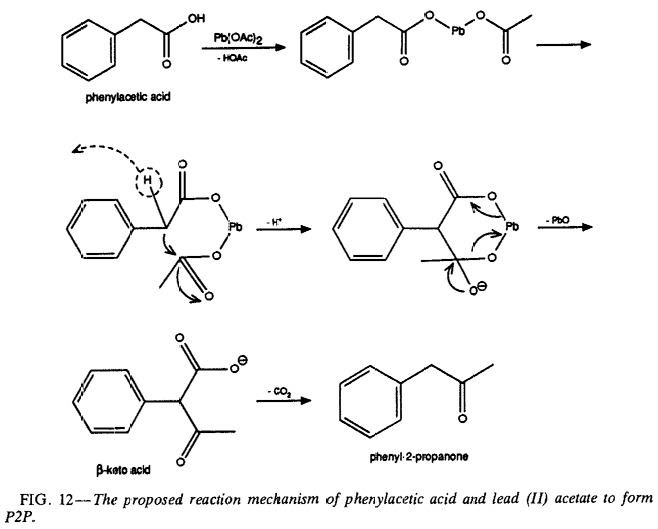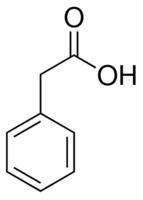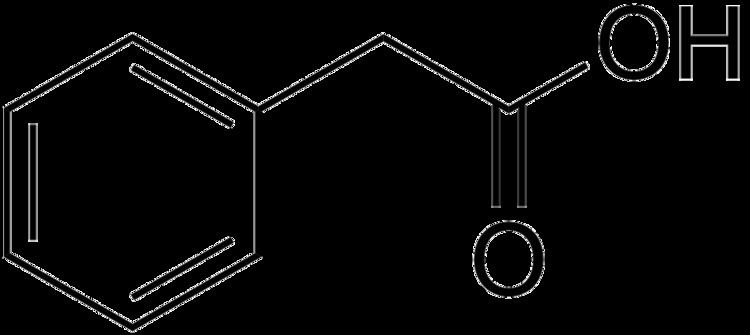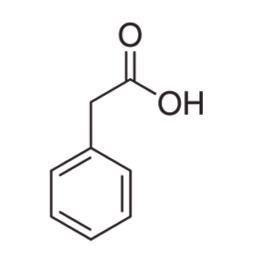Formula C8H8O2 Boiling point 265.5 °C | Molar mass 136.15 g/mol Density 1.08 g/cm³ | |
Phenylacetic acid (PAA) (conjugate base phenylacetate), also known by various synonyms, is an organic compound containing a phenyl functional group and a carboxylic acid functional group. It is a white solid with a disagreeable odor. Endogeneously, it is a catabolite of phenylalanine. As a commercial chemical, because it can be used in the illicit production of phenylacetone (used in the manufacture of substituted amphetamines), it is subject to controls in countries including the United States and China.
Contents

Names
Synonyms include α-toluic acid, benzeneacetic acid, alpha tolylic acid, 2-phenylacetic acid, and β-phenylacetic acid.
Occurrence

Phenylacetic acid has been found to be an active auxin (a type of plant hormone), found predominantly in fruits. However, its effect is much weaker than the effect of the basic auxin molecule indole-3-acetic acid. In addition the molecule is naturally produced by the metapleural gland of most ant species and used as an antimicrobial. It is also the oxidation product of phenethylamine in humans following metabolism by monoamine oxidase and subsequent metabolism of the intermediate product, phenylacetaldehyde, by the aldehyde dehydrogenase enzyme; these enzymes are also found in many other organisms.
Preparation
This compound may be prepared by the hydrolysis of benzyl cyanide:
Applications

Phenylacetic acid is used in some perfumes, as it possesses a honey-like odor in low concentrations. It is also used in penicillin G production and diclofenac production. It is also employed to treat type II hyperammonemia to help reduce the amounts of ammonia in a patient's bloodstream by forming phenylacetyl-CoA, which then reacts with nitrogen-rich glutamine to form phenylacetylglutamine. This compound is then secreted by the patient's body. It's also used in the illicit production of phenylacetone, which is used in the manufacture of methamphetamine.

Camylofin is made from BnCO2H in a 3-step reaction consisting of a Hell–Volhard–Zelinsky halogenation, esterfication of the acid bromide with isoamylalcohol, and then reaction of the remaining alkylbromide with 2-(dethylamino)ethylamine.


